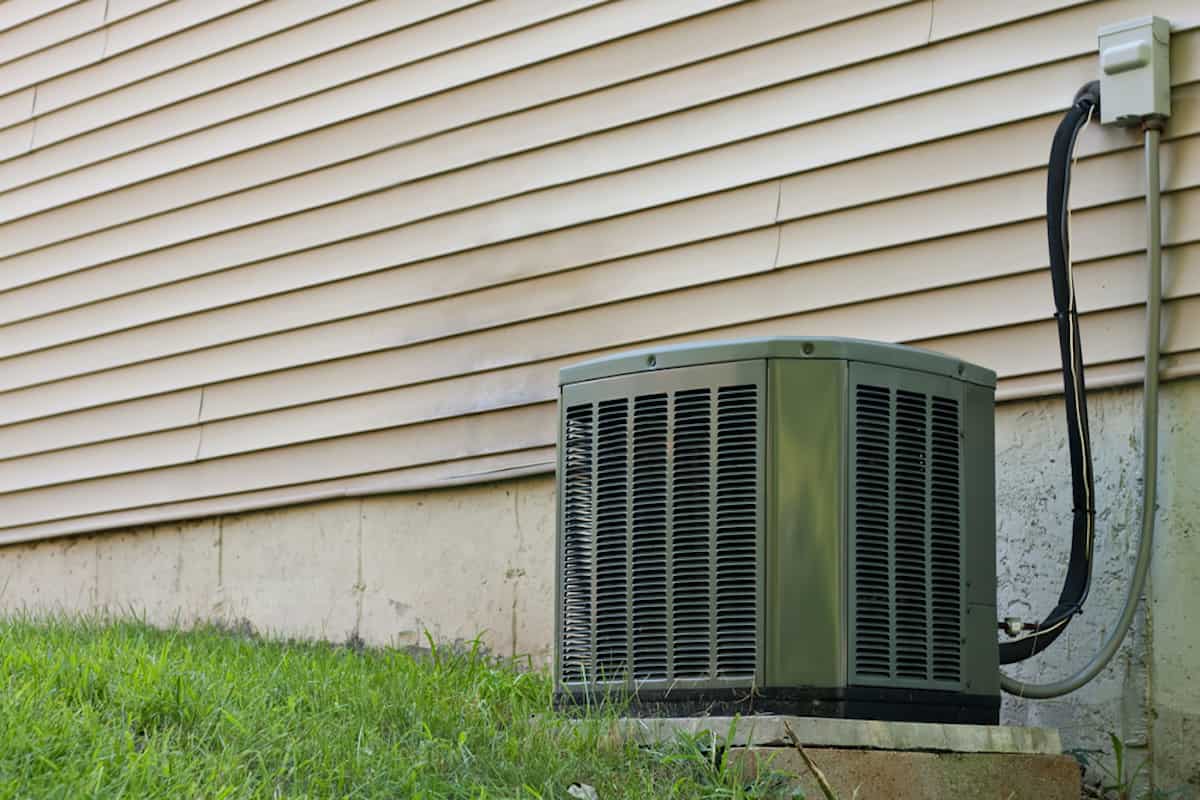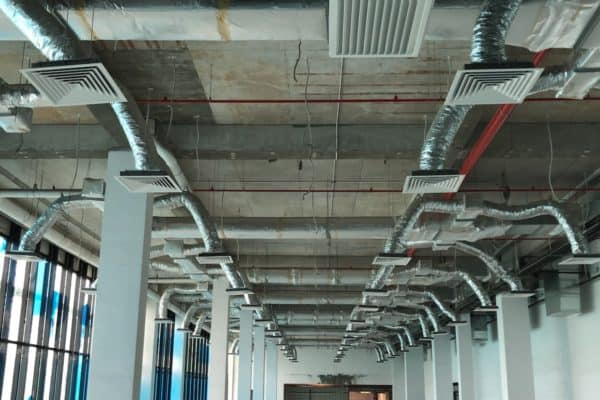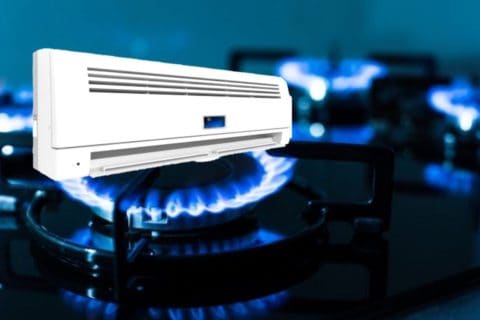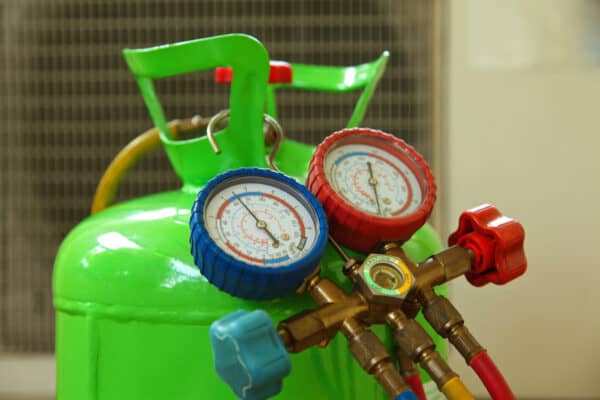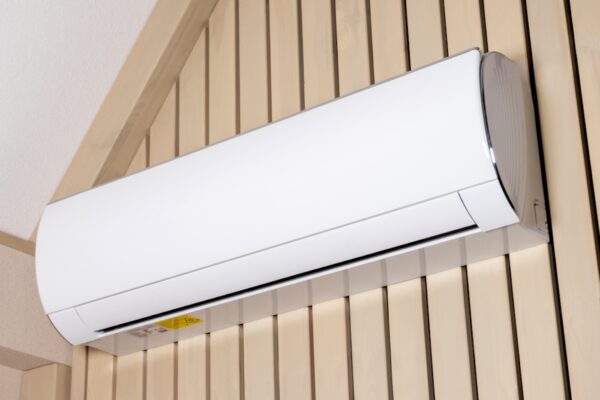How Many Square Feet a 3-Ton Air Conditioner Cools?
A 3-ton air conditioner is one of the most common air conditioner sizes used in homes. It can be used to cool a single room or an entire house. So, how many square feet a 3-ton air conditioner cools?
Generally, a 3-ton air conditioner can comfortably cool a 1500 square feet room. For an entire house, a 3-ton air conditioner is usually sufficient for a 2000 sqft insulated house. On the upper limit, a 3-ton air conditioner can cool a house with a floor area up to 2400 sqft.
How many square feet a 3-ton air conditioner cools is depending on several factors. Homeowners don’t really want to do engineering calculations. So, I made a few examples.
Is a 3-Ton Air Conditioner Enough?
To give you an idea about whether a 3-ton air conditioner is enough for your house, I prepared a house plan of 3 common types of single-family houses with different floor areas.
Take note that the following examples of cooling capacity calculation are assumed that the house is insulated. For non-insulated houses, the cooling capacity needed could be doubled.
1800 Sqft Double Story Country House
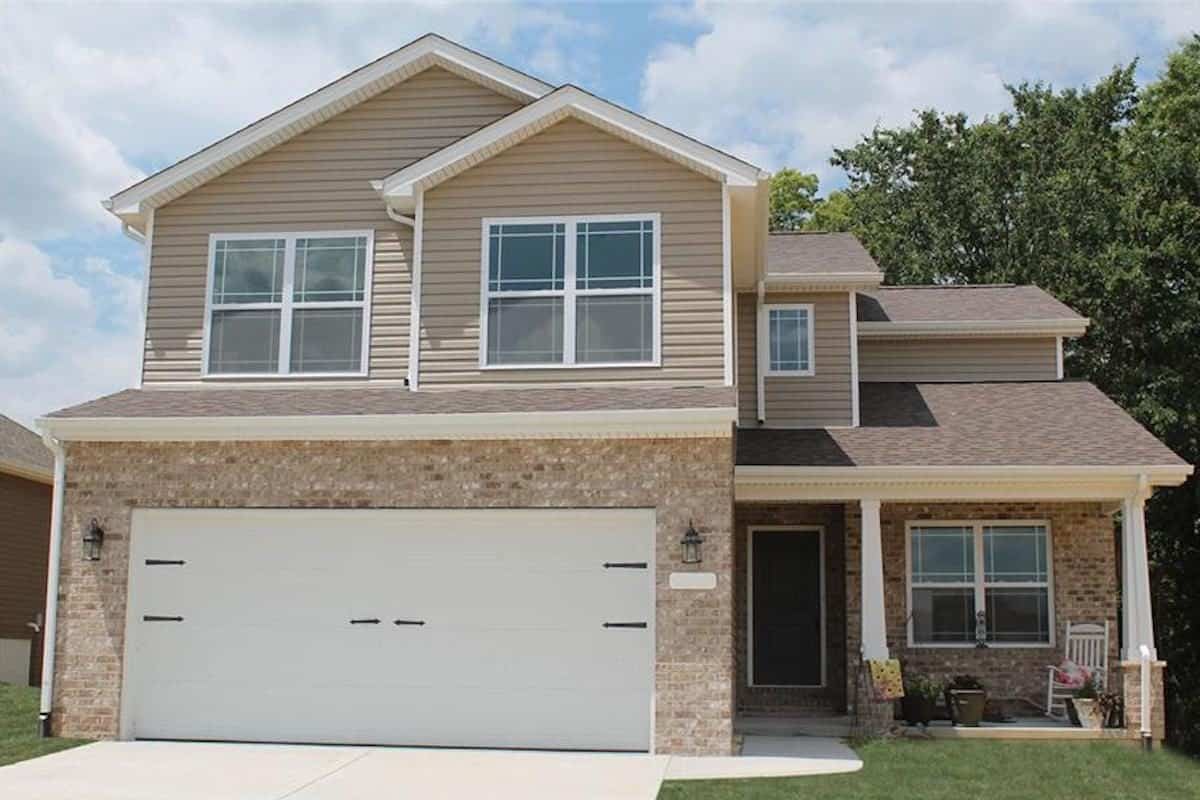
A typical 1800 sqft double-story country house usually has a large garage, dining room and family room with 3-4 bedrooms. Although it has 1800 sqft of total floor area, the total square footage required for cooling maybe around 1080 only, excluding the garage.
Following is the floor plan of a typical double-story 1800 sqft country-style house:
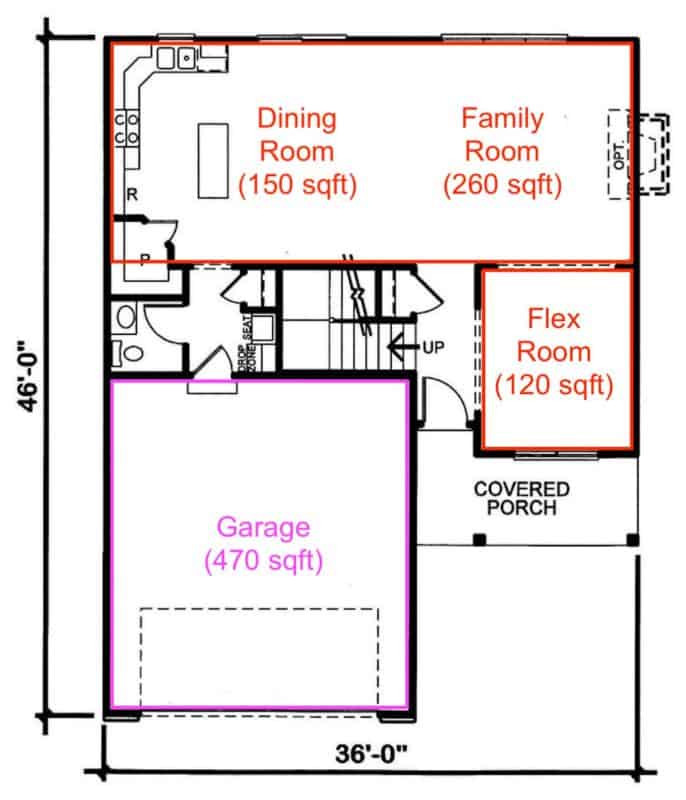
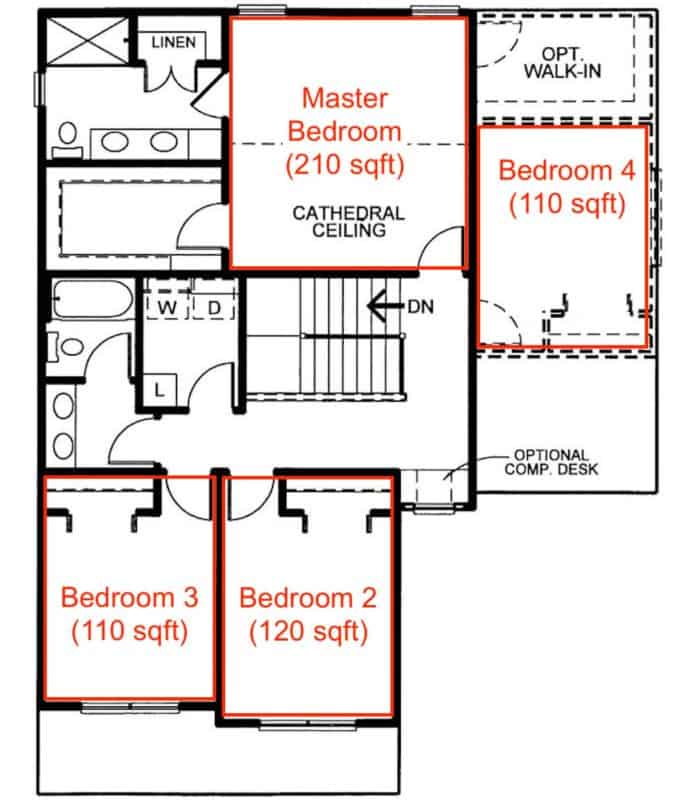
For most people, the bathroom, hallway and stairs don’t need dedicated air conditioning. So, we don’t have to include the floor area of these spaces in our air conditioner size calculation.
Furthermore, the garage often demands much greater cooling than the rest of the house. Besides, some houses don’t have ductwork in the garage. Hence, most people opt for a separate air conditioning system such as the mini split system for the garage.
Therefore, we are left with the dining room, family room, flex room (if got) and bedroom.
Below is a summary of the cooling capacity needed for each room:
| Room | Floor Area | Cooling Capacity Needed |
|---|---|---|
| Dining and Family Room | 410 sqft | 16300 BTU |
| Flex Room | 120 sqft | 2400 BTU |
| Master Bedroom | 210 sqft | 5250 BTU |
| Bedroom 2 | 120 sqft | 3000 BTU |
| Bedroom 3 | 110 sqft | 2750 BTU |
| Bedroom 4 | 110 sqft | 2750 BTU |
| Total | 1080 sqft | 32450 BTU |
Since the dining room and the family room have no partition wall in between, they can be combined into one large space. Furthermore, there are several kitchen appliances in the room and thus, an additional 4000 BTU cooling capacity is needed.
Assume that the house has a standard 9 ft tall ceiling. So, we don’t need to add more cooling capacity to accommodate the extra space.
We usually use about 20-30 BTU per square foot to calculate the cooling capacity needed for each room. If we expect to hold more people (eg: 4-6 people) at once, then we use 30 BTU per square foot. For small and windowless rooms, we use 20 BTU per square foot.
Moreover, if a room has many windows or the sunlight coming in the room is very strong in the afternoon, we also use a higher value of BTU per square foot (eg: 25 or 30) for the calculation.
So, to calculate the cooling capacity needed for each room, multiply the BTU per square feet value by the floor area (square footage) of the room.
For example, the master bedroom has 210 sqft of floor area. By using 25 BTU per square foot, the cooling capacity needed is 5250 BTU.
Now, the total cooling capacity needed for the above 1800 sqft country house is 32450 BTU which is exactly 2.7 tons given that one ton is equivalent to 12000 BTU.
But, it is rare to have an exact 2.7-ton air conditioner on the market. Most of the time, the cooling capacity of the air conditioner in this case is either 2.5 tons or 3 tons.
Personally, I would pick a 3-ton air conditioner with inverter technology (variable speed). With inverter technology, a 3-ton air conditioner usually can operate at anywhere between 12000 BTU and 36000 BTU depending on the model.
As a result, if I don’t need that much cooling, my 3-ton air conditioner can reduce its cooling capacity and therefore, my house won’t be too cold and I can save energy too.
Meanwhile, my 3-ton air conditioner has sufficient cooling capacity to keep my house cool and comfy during exceptionally hot days (over 100°F).
So, a 3-ton air conditioner is feasible if you have an 1800 sqft double story country house similar to the above example.
2000 Sqft Double Story Craftsman House
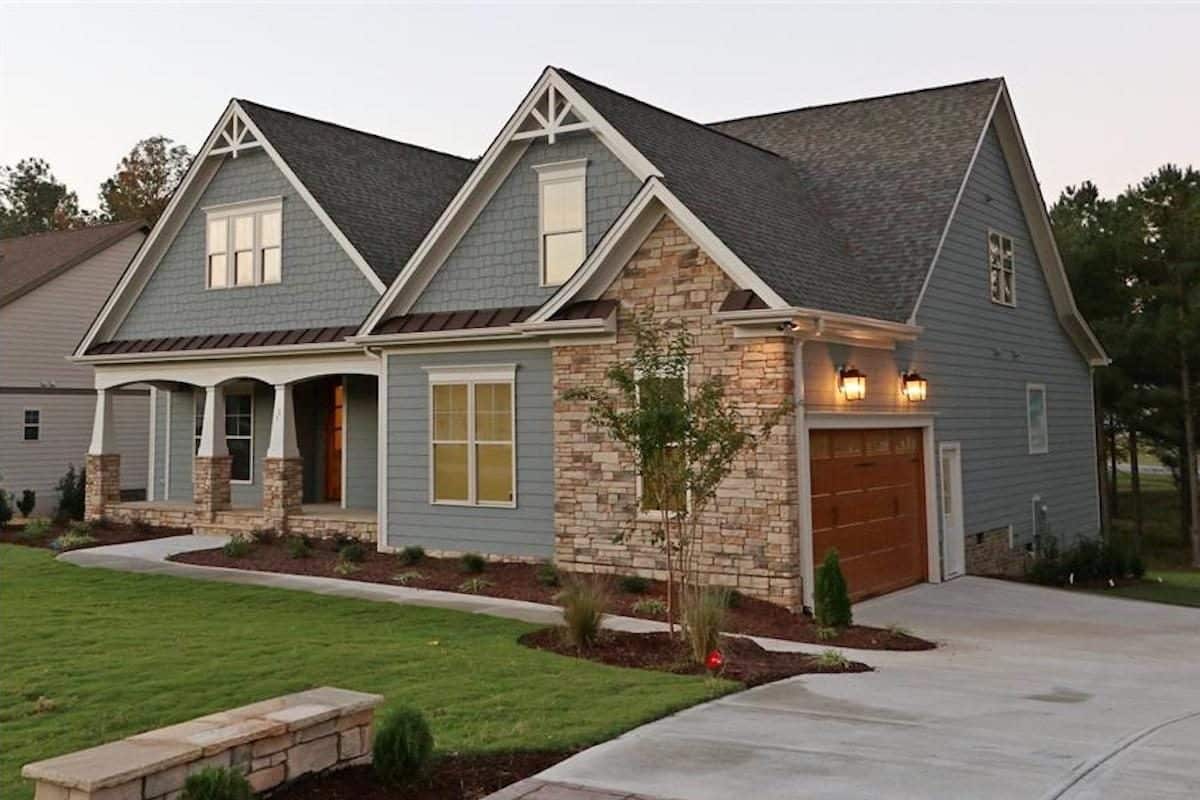
A typical 2000 sqft double story craftsman house has a large garage and plenty of bedrooms. Although it is a 2000 sqft house, the total floor area that required cooling is often around 1650 sqft only, excluding the garage.
Following is the floor plan of a typical 2000 sqft double story craftsman-style house:
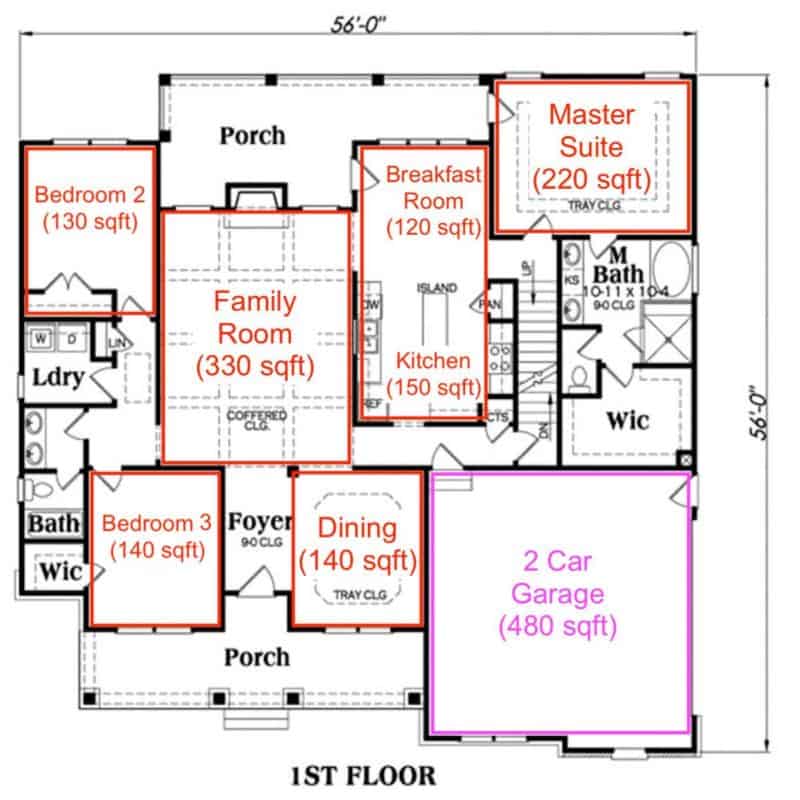
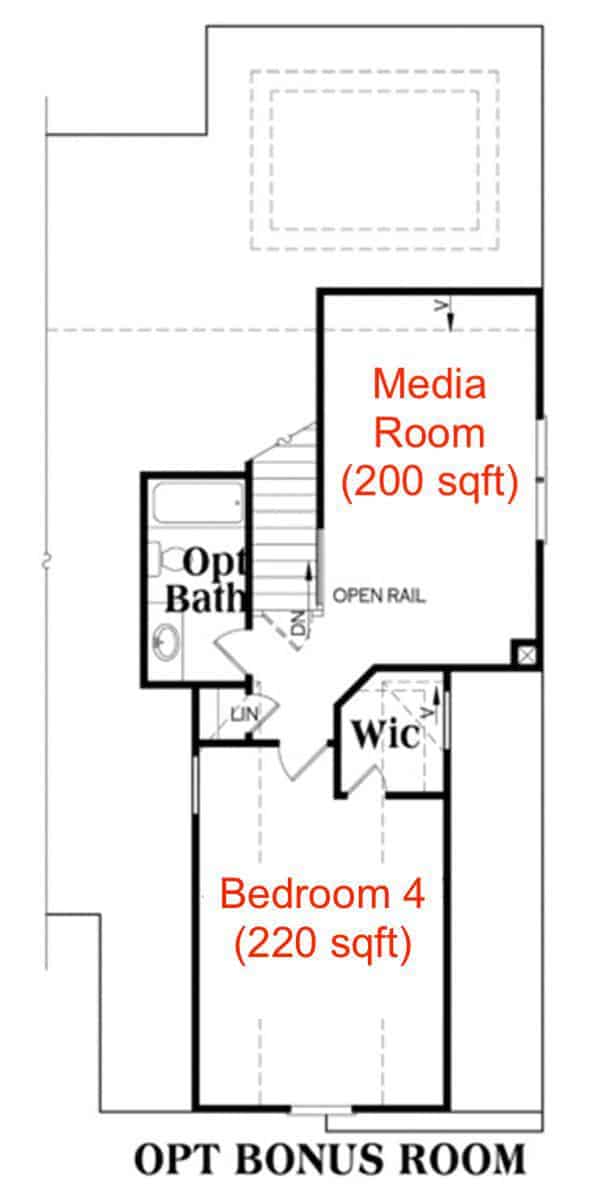
For most people, again the bathroom, hallway and stairs don’t need dedicated air conditioning. So, we can exclude the floor area of these spaces from our air conditioner size calculation.
Furthermore, the garage often demands much greater cooling than the rest of the house. Besides, some houses don’t have ductwork in the garage. Hence, most people opt for a separate air conditioning system such as the mini split system for the garage.
Therefore, we are left with the family room, kitchen, dining room, breakfast room, media room and bedroom.
Below is a summary of the cooling capacity needed for each room:
| Room | Floor Area | Cooling Capacity Needed |
|---|---|---|
| Family Room | 330 sqft | 8250 BTU |
| Dining | 140 sqft | 2800 BTU |
| Kitchen and Breakfast Room | 270 sqft | 6750 BTU |
| Master Suite | 220 sqft | 5500 BTU |
| Bedroom 2 | 130 sqft | 2600 BTU |
| Bedroom 3 | 140 sqft | 2800 BTU |
| Bedroom 4 | 220 sqft | 4400 BTU |
| Media Room | 200 sqft | 4000 BTU |
| Total | 1650 sqft | 37100 BTU |
Since there is no partition wall in between the breakfast room and kitchen, they can be combined into one large room. Still, notice that the cooling capacity of each room is slightly lower compared to the first example.
The cooling capacity needed for each room is really depending on factors such as the number of people, solar heat gain from windows and the heat emitted by electrical appliances and lighting. So, we need to decide on any figure between 20-30 BTU per square foot.
Furthermore, if the house is well-insulated, we also can reduce the cooling capacity needed for each room. Hence, older houses often need more cooling capacity to achieve the same cooling effect due to insulation degradation.
Now, the total cooling capacity needed for the above 2000 sqft double story craftsman house is 37100 BTU or about 3.1 tons given that one ton equals 12000 BTU.
However, there is no exactly 3.1-ton air conditioner on the market. So, we can either go for a 3.5-ton air conditioner or use a 3-ton air conditioner to save cost.
If you’re living in a place where the outdoor temperature barely exceeds 95°F during the summer, you can consider putting a 3-ton air conditioner in a 2000 sqft house like the above example.
Most air conditioners have their cooling capacity rated based on an outdoor temperature of 95°F. The higher the outdoor temperature, the lower the cooling capacity and vice versa.
2400 Sqft Double Story Farmhouse
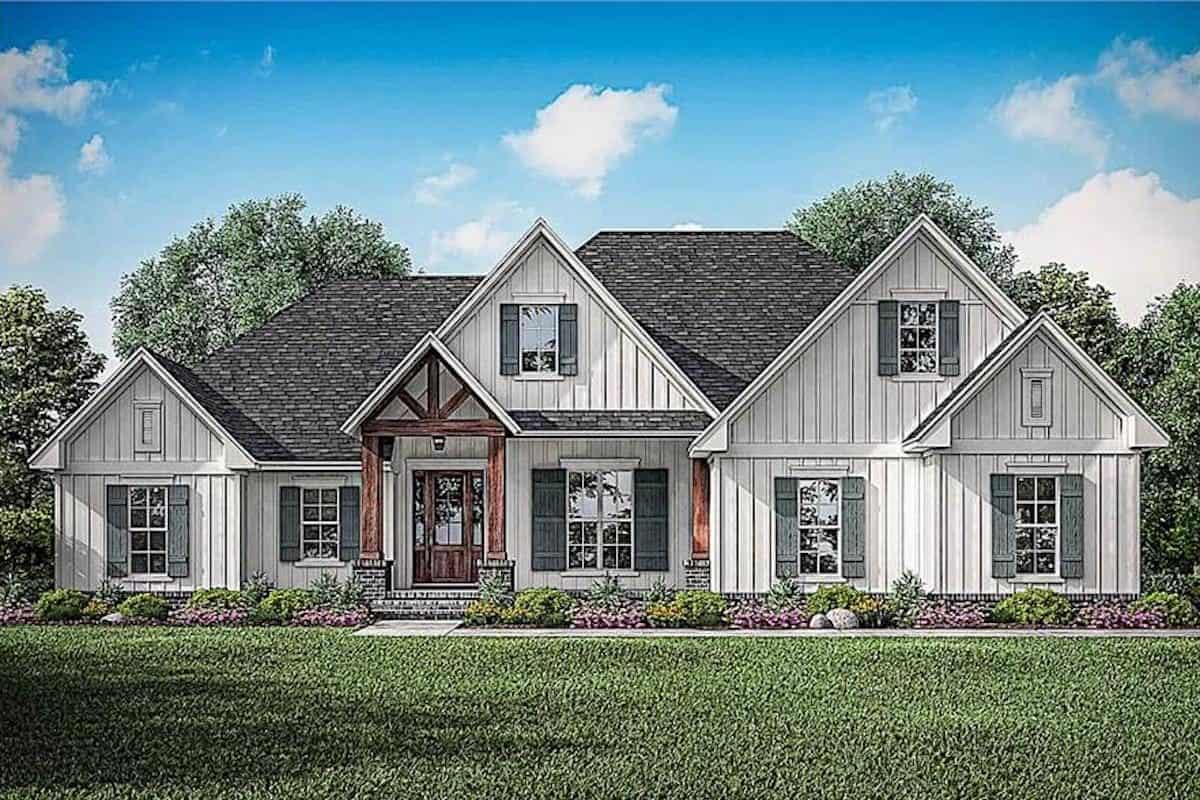
A typical 2400 sqft double story farmhouse may have a very large built-up area but the room size is quite similar to a 2000 sqft craftsman house or even an 1800 sqft country house. The total floor area that needs cooling maybe around 1660 sqft only.
Following is the floor plan of a typical 2400 sqft double story farmhouse:
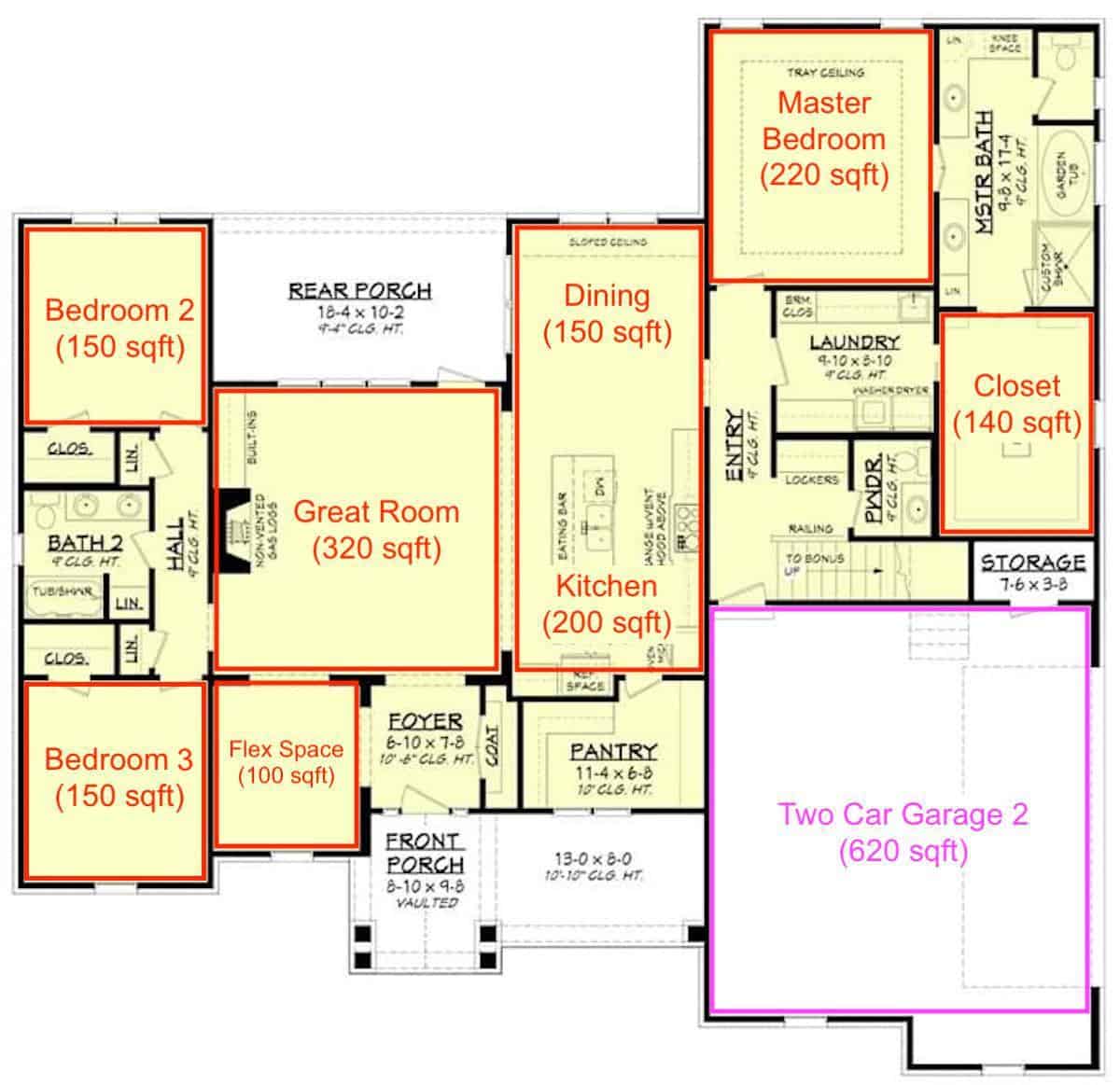
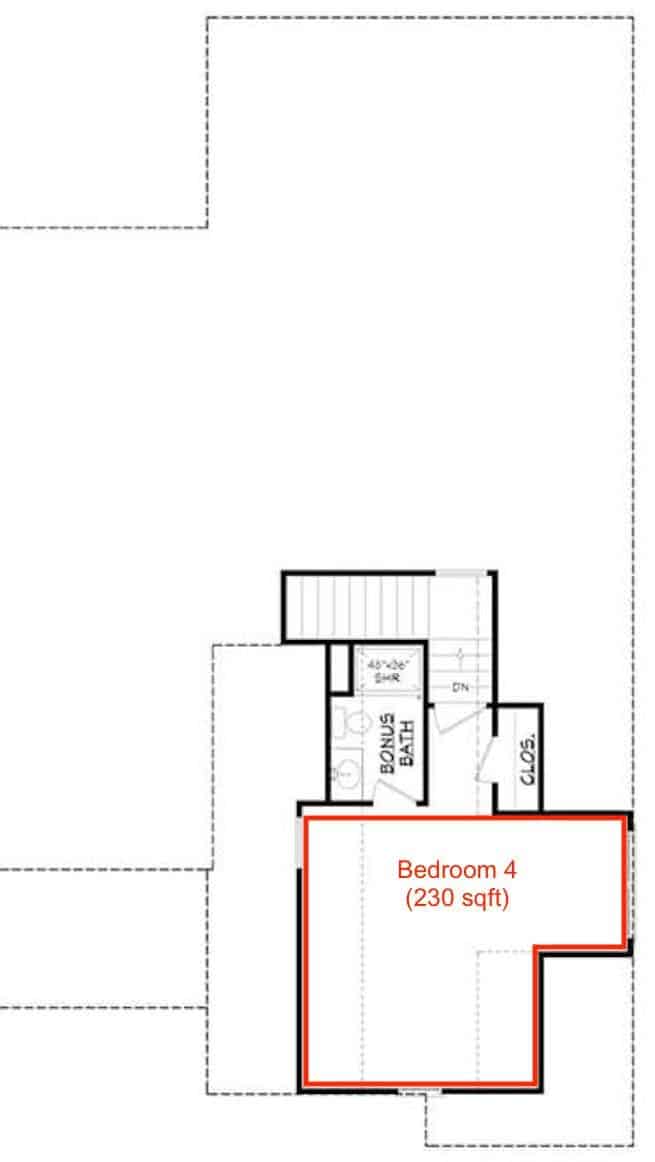
For an even bigger size house, there are even more rooms that don’t require cooling. These rooms can be excluded such that a 3-ton air conditioner is sufficient to cool the entire house.
However, putting a 3-ton air conditioner in a 2400 sqft house is on the upper limit. During hot days, certain rooms (especially those that have a lot of windows) may not have sufficient cooling.
Below is a summary of the possible cooling capacity for each room:
| Room | Floor Area | Cooling Capacity Needed |
|---|---|---|
| Great Room | 320 sqft | 8000 BTU |
| Dining and Kitchen | 350 sqft | 8750 BTU |
| Master Bedroom | 220 sqft | 4400 BTU |
| Closet | 140 sqft | 2800 BTU |
| Bedroom 2 | 150 sqft | 3000 BTU |
| Bedroom 3 | 150 sqft | 3000 BTU |
| Bedroom 4 | 230 sqft | 5750 BTU |
| Flex Room | 100 sqft | 2000 BTU |
| Total | 1660 sqft | 37700 BTU |
Most of the rooms are given 20 BTU per square foot of cooling capacity. Hence, if there is more people in the room or the sunlight coming in the room is very strong, insufficient cooling problems may occur.
However, such a design is not wrong and is often considered as efficient because we are sizing the air conditioner based on the condition we expect to get most of the time.
Furthermore, we can opt-out of the need for cooling unnecessary rooms such as the closet. Hence, we can have more cooling capacity for other rooms.
Putting a 3-ton air conditioner in a 2400 sqft double-story farmhouse is not impossible. But, you should expect to have a blind/curtain on all windows. Besides, the insulation of the house is expected to be in a good condition.
Furthermore, the 3-ton air conditioner may not be able to give you too low of a room temperature such as 70°F. Moreover, the installation quality must be very good as there is not much room for mistakes.
Final Thought
For a room, the calculation of the cooling capacity needed is straightforward. For homeowners, just multiply a figure anywhere between 20-30 BTU per square foot by the square footage of the room to get the cooling capacity needed.
For a house, you need to decide which room needs cooling. Then, calculate the square footage of each room and obtain the cooling capacity needed by multiplying it by a figure anywhere between 20-30 BTU per square foot.
When deciding on a figure between 20-30 BTU per square foot, you need to account for the heat gain from various sources such as people, electrical appliances, lighting and windows. If you think that the room is going to be a lot hotter than other rooms, use a higher BTU per square feet value.
The cooling capacity calculation is always an estimation. Even with sophisticated heat load calculation software, engineers often lack various information and they fill the gap with assumptions most of the time.
Finally, putting an air conditioner with a slightly bigger cooling capacity (eg: one size bigger) is always better than not having sufficient cooling later on. However, the initial cost is also an important consideration.
Lastly, consider my Mini Split (eBook) if you want to know how can you use Mini Split in your house. If you still have doubt or not feeling confident enough, feel free to consult me.
Consultation Service
Ask me for HVAC advice such as brand selection, best model, benefits, features, placement, duct size, grille size, how to design, design check, verification and other HVAC related queries.
If you have anything to add (or ask) about this topic, leave a comment down below!


